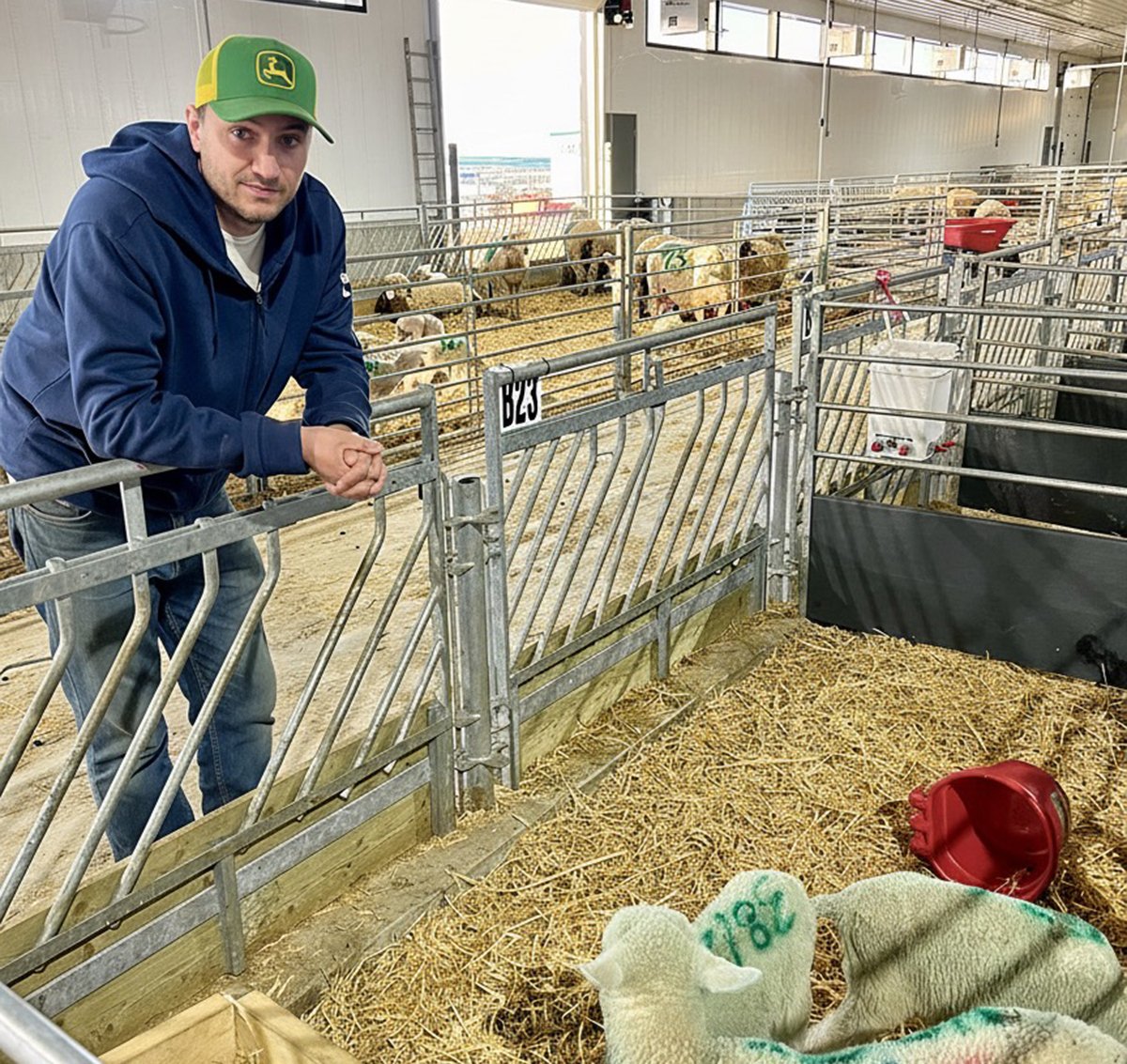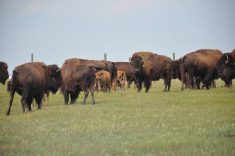Anders Mortensen’s search for possible embryo exports to Denmark brought him to the recent Canadian Bull Congress in Camrose.
For 12 days, Mortensen and his son, Christoffer, looked for good Angus and Hereford bloodlines by travelling to farms, looking at records and attended the bull congress.
“I try to avoid pure luck and make a proper survey,” he said. “We get so little semen, you have to really do your homework to prevent failures.”
Mortensen isn’t looking for the latest in fashionable cattle. Rather, he wants good solid genetics that will give the Danish beef cattle herd a boost.
Read Also

Solar, sheep provide valuable farm diversification
Eric Steeves says raising sheep on forages grown under solar panels provided economic stability and perhaps even saved his family’s fifth generation southern Alberta grain farm.
“It’s not important that it’s new,” said Mortensen, who owns the oldest Hereford farm in Denmark.
“It’s important that it has the same high input every time. I’m looking for consistent bloodlines that can raise a certain type of animal every time.”
When he returns home, he will submit his report to the Danish Hereford Society, with recommendations narrowed to two to four bloodlines.
“I select what they will see. I’ve done all the homework,” said Mortensen, who made similar recommendations during a trip to Australia in 2004.
The bull congress paid for part of Mortensen’s trip using a federal grant accessed through its membership in the Canadian Beef Breeds Council.
Previous genetic export deals reached during the Camrose show have been credited to the grant, which is designed to promote Canadian cattle genetics.
Mortensen expects Scandinavian producers will buy about 100 embryos based on his recommendations. Strict health regulations make it difficult for Europeans to import semen.
The average beef cattle herd in Denmark is eight cows, mostly owned by acreage owners looking for what Mortensen called big pets.
“We need to produce functional cows, but easy is more important.”
Eighty percent of Danish Herefords are polled because it’s easier for acreage owners. Humane handling regulations require veterinarians be present during dehorning.
As well, all cattle must have a pedicure once a year. The hoof trimming rule was designed for Denmark’s dairy cattle, but beef were included in the regulations, he said.
While in Alberta, Mortensen concentrated his search on Angus and Hereford cattle that are different than the European-type cattle already in Denmark.
Limousin is one of the most popular beef breeds in Europe and has a strong marketing brand.
“It’s easy to get professional ranchers to go for Limousin because the chain is already put together.”
Mortensen said his father, a former dairy adviser, helped introduce Hereford cattle to Denmark in the 1960s. Their farm now consists of 100 acres and 40 head of Herefords.
Mortensen and his wife, Lene, work off the farm but have the Hereford cattle as their family project. The family takes their cattle to three to four shows a year.
“We call it a family vacation,” he said. “We like to have cattle. It helps maintain your family if you have a shared project, and we share cattle.”














